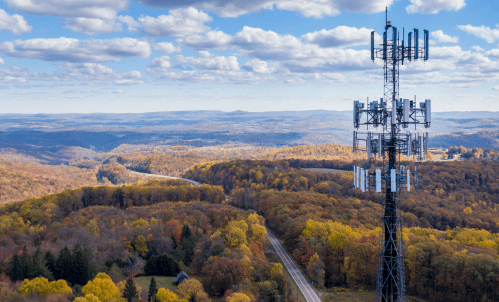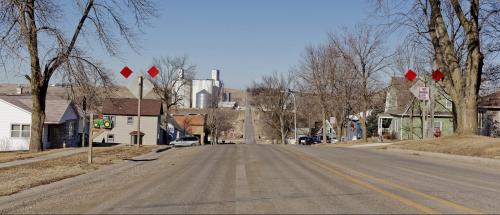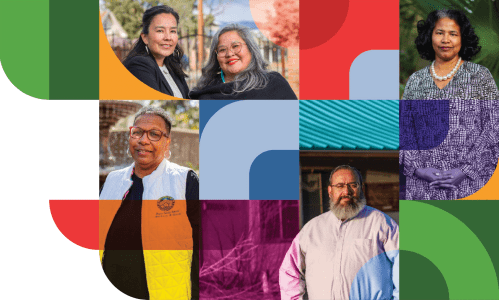The American economy has gone digital and broadband is the connective tissue enabling that transformation. Two decades into the 21st century, it’s impossible to categorize broadband as anything but essential infrastructure.
However, broadband doesn’t yet look like the country’s other essential systems. Unlike water and energy, which reach almost all households, broadband subscription gaps are sizable and build barriers to economic opportunity in the process. Whether it’s consumers who are forced to pay higher prices at a local store than online, children who must travel to do web-based homework, or job seekers missing out on employment openings, Americans who lack a private broadband subscription shoulder substantial costs.
It’s vital, then, to track how broadband subscriptions look across the country—both nationally and in individual communities. Over the past four years, the U.S. Census Bureau’s American Community Survey (ACS) has asked households whether they have access to the Internet “using a broadband (high speed) Internet service such as cable, fiber optic, or DSL service….” The answers reveal where subscriptions are ticking up and where gaps persist.
National broadband adoption continues to rise
Using ACS data from 2013 through 2017, we find that the country has adopted broadband service at growing rates, especially in some metro areas where subscription rates were the lowest. Yet inconsistent growth rates across metro areas confirm that many people are still left in the digital dark—and show just how far broadband performance is from matching other essential infrastructure systems.
Inconsistent growth rates across metro areas confirm that many people are still left in the digital dark—and show just how far broadband performance is from matching other essential infrastructure systems.
Overall, the United States is digitizing rapidly. Between 2013 and 2017, national broadband adoption (the share of all households with a broadband subscription) rose from 73.4 percent to 83.5 percent, with adoption rising especially fast since 2015. This nearly matches the in-home, wireline subscription numbers the National Telecommunications and Information Administration (NTIA) reported in November 2017. Despite strong growth, however, tens of millions of households still lack broadband subscriptions. If this were our national rate of water access, it would equate to an emerging nation. This reality should be unacceptable.
Lagging metro areas are catching up
Across the 100 largest metro areas, the picture looks similar, with broadband adoption rising from 74.8 percent in 2013 to 85.8 percent in 2017. While almost all of these metro areas saw a statistically significant increase[1] in broadband adoption, the gains did not occur evenly. In fact, metro areas with the lowest adoption rates in 2013 tended to see the largest gains over the last four years.

This dynamic means that more communities today are registering high rates of broadband adoption. In 2013, just 14 of the 100 largest metro areas had broadband adoption rates higher than 80 percent. By 2017, 85 metro areas hit that benchmark. Still, a number of large metropolitan areas have tens of thousands of households who face significant digital barriers.


More work remains for local leaders
What do these broadband adoption rates mean for local economic development leaders? First and foremost, every community needs to work harder at getting more people online. From digitized schools to preparing a digital workforce to deploying smart city technologies, tapping the potential of a digital economy relies on a fully-connected population. Even San Francisco, the global epicenter of the digital transformation, struggles with getting all people online. It’s going to take more policy reforms, pricing assistance, and community engagement to reach the digitally underserved.
One important approach is to investigate what kinds of broadband subscriptions are growing fastest in each community. Census data doesn’t differentiate between wireless and wireline service, but we know these are complementary technologies, not substitutes for one another. Not only do smartphones make it harder to perform productive tasks like creating a resume or working online, but also wireless plans often have data caps and other redundancy issues. If a city or region’s numbers look better due largely to smartphone and wireless adoption, local leaders may need to work harder at boosting higher quality in-home service.
Forthcoming data will help places in these efforts. This December, we’ll get the first five-year broadband estimates at the census tract level, meaning we can see how broadband adoption differs across neighborhoods. Based on existing FCC data, we already know wireline rates deviate based on income, education, and other factors often associated with economic opportunity. Even if metro-scale adoption is trending upwards, chances are certain neighborhoods could still be falling further behind.
For now, though, there is reason to be optimistic. The gains we’ve seen in broadband adoption over the past four years are significant. They will have positive impacts on millions of households that are now reliably connected to the Internet, and further strengthen our country’s essential digital foundation. Because America’s economic and social connections are increasingly occurring online, the time to make widespread broadband a priority is now.
[1] All changes are defined as statistically significant at the 90 percent level.








Commentary
Broadband subscriptions are up, but too many households are still disconnected
September 28, 2018